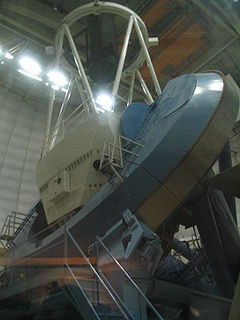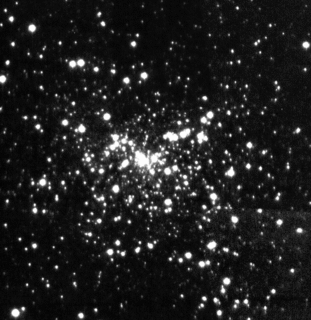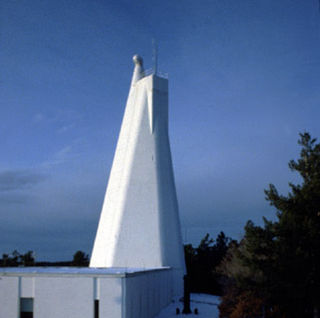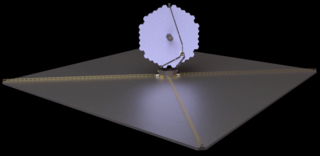Astrophysics is a science that employs the methods and principles of physics and chemistry in the study of astronomical objects and phenomena. As one of the founders of the discipline said, Astrophysics "seeks to ascertain the nature of the heavenly bodies, rather than their positions or motions in space–what they are, rather than where they are." Among the subjects studied are the Sun, other stars, galaxies, extrasolar planets, the interstellar medium and the cosmic microwave background. Emissions from these objects are examined across all parts of the electromagnetic spectrum, and the properties examined include luminosity, density, temperature, and chemical composition. Because astrophysics is a very broad subject, astrophysicists apply concepts and methods from many disciplines of physics and chemistry, including classical mechanics, electromagnetism, statistical mechanics, thermodynamics, quantum mechanics, relativity, nuclear and particle physics, and atomic and molecular physics.

3C 279 is an optically violent variable quasar (OVV), which is known in the astronomical community for its variations in the visible, radio and x-ray bands. The quasar was observed to have undergone a period of extreme activity from 1987 until 1991. The Rosemary Hill Observatory (RHO) started observing 3C 279 in 1971, the object was further observed by the Compton Gamma Ray Observatory in 1991, when it was unexpectedly discovered to be one of the brightest gamma ray objects in the sky. It is also one of the brightest and most variable sources in the gamma ray sky monitored by the Fermi Space Telescope. It was used as a calibrator source for Event Horizon Telescope observations of M87* that resulted in the first image of a black hole.

Observational astronomy is a division of astronomy that is concerned with recording data about the observable universe, in contrast with theoretical astronomy, which is mainly concerned with calculating the measurable implications of physical models. It is the practice and study of observing celestial objects with the use of telescopes and other astronomical instruments.

The National Optical Astronomy Observatory (NOAO) was the United States national observatory for ground-based nighttime ultraviolet-optical-infrared (OUVIR) astronomy. The National Science Foundation (NSF) funded NOAO to provide forefront astronomical research facilities for US astronomers. Professional astronomers from any country in the world could apply to use the telescopes operated by NOAO under the NSF's "open skies" policy.
The Max Planck Institute for Extraterrestrial Physics is a Max Planck Institute, located in Garching, near Munich, Germany. In 1991 the Max Planck Institute for Physics and Astrophysics split up into the Max Planck Institute for Extraterrestrial Physics, the Max Planck Institute for Physics and the Max Planck Institute for Astrophysics. The Max Planck Institute for Extraterrestrial Physics was founded as sub-institute in 1963. The scientific activities of the institute are mostly devoted to astrophysics with telescopes orbiting in space. A large amount of the resources are spent for studying black holes in the galaxy and in the remote universe.

Lucky imaging is one form of speckle imaging used for astrophotography. Speckle imaging techniques use a high-speed camera with exposure times short enough so that the changes in the Earth's atmosphere during the exposure are minimal.

COAST, the Cambridge Optical Aperture Synthesis Telescope, is a multi-element optical astronomical interferometer with baselines of up to 100 metres, which uses aperture synthesis to observe stars with angular resolution as high as one thousandth of one arcsecond. The principal limitation is that COAST can only image bright stars.

The Canada–France–Hawaii Telescope (CFHT) is located near the summit of Mauna Kea mountain on Hawaii's Big Island at an altitude of 4,204 meters, part of the Mauna Kea Observatory. Operational since 1979, the telescope is a Prime Focus/Cassegrain configuration with a usable aperture diameter of 3.58 metres (11.7 ft).

The Dunn Solar Telescope is a unique vertical-axis solar telescope, in Sunspot, New Mexico located at Sacramento Peak, New Mexico. It is the main telescope at the Sunspot Solar Observatory, operated by New Mexico State University in partnership with the National Solar Observatory through funding by the National Science Foundation, the state of New Mexico and private funds from other partners. The Dunn Solar Telescope specializes in high-resolution imaging and spectroscopy to help astrophysicists worldwide obtain a better understanding of how the Sun affects the Earth. Completed in 1969, it was upgraded with high-order adaptive optics in 2004 and remains a highly versatile astrophysical observatory which serves as an important test platform for developing new instrumentation and technologies.

An astronomical interferometer or telescope array is a set of separate telescopes, mirror segments, or radio telescope antennas that work together as a single telescope to provide higher resolution images of astronomical objects such as stars, nebulas and galaxies by means of interferometry. The advantage of this technique is that it can theoretically produce images with the angular resolution of a huge telescope with an aperture equal to the separation between the component telescopes. The main drawback is that it does not collect as much light as the complete instrument's mirror. Thus it is mainly useful for fine resolution of more luminous astronomical objects, such as close binary stars. Another drawback is that the maximum angular size of a detectable emission source is limited by the minimum gap between detectors in the collector array.

Astrosat is India's first dedicated multi-wavelength space telescope. It was launched on a PSLV-XL on 28 September 2015. With the success of this satellite, ISRO has proposed launching AstroSat-2 as a successor for Astrosat.
OGLE-TR-113 is a dim, distant magnitude 16 binary star in the star fields of the constellation Carina. Because of its distance of about 1170 light years, and location in a crowded field it was not notable in any way. Its apparent brightness changes when one of its planets transits, so the star has been given the variable star designation V752 Carinae. Spectral type of the star is type K dwarf star, slightly cooler and less luminous than the Sun.

In astronomy Westerhout 49 also known as W49, is a strong galactic thermal radio source characteristic of an HII region. It was discovered by Gart Westerhout in 1958.

OGLE2-TR-L9 is a magnitude 15 star in the constellation Carina at a distance of approximately 5,142 light years.
The SOPHIEéchelle spectrograph is a high-resolution echelle spectrograph installed on the 1.93m reflector telescope at the Haute-Provence Observatory located in south-eastern France. The purpose of this instrument is asteroseismology and extrasolar planet detection by the radial velocity method. It builds upon and replaces the older ELODIE spectrograph. This instrument was made available for use by the general astronomical community October 2006.
A Fresnel imager is a proposed ultra-lightweight design for a space telescope that uses a Fresnel array as primary optics instead of a typical lens. It focuses light with a thin opaque foil sheet punched with specially shaped holes, thus focusing light on a certain point by using the phenomenon of diffraction. Such patterned sheets, called Fresnel zone plates, have long been used for focusing laser beams, but have so far not been used for astronomy. No optical material is involved in the focusing process as in traditional telescopes. Rather, the light collected by the Fresnel array is concentrated on smaller classical optics, to form a final image.

The Large Ultraviolet Optical Infrared Surveyor, commonly known as LUVOIR, is a multi-wavelength space telescope concept being developed by NASA under the leadership of a Science and Technology Definition Team. It is one of four large astrophysics space mission concepts studied in preparation for the National Academy of Sciences 2020 Astronomy and Astrophysics Decadal Survey.











